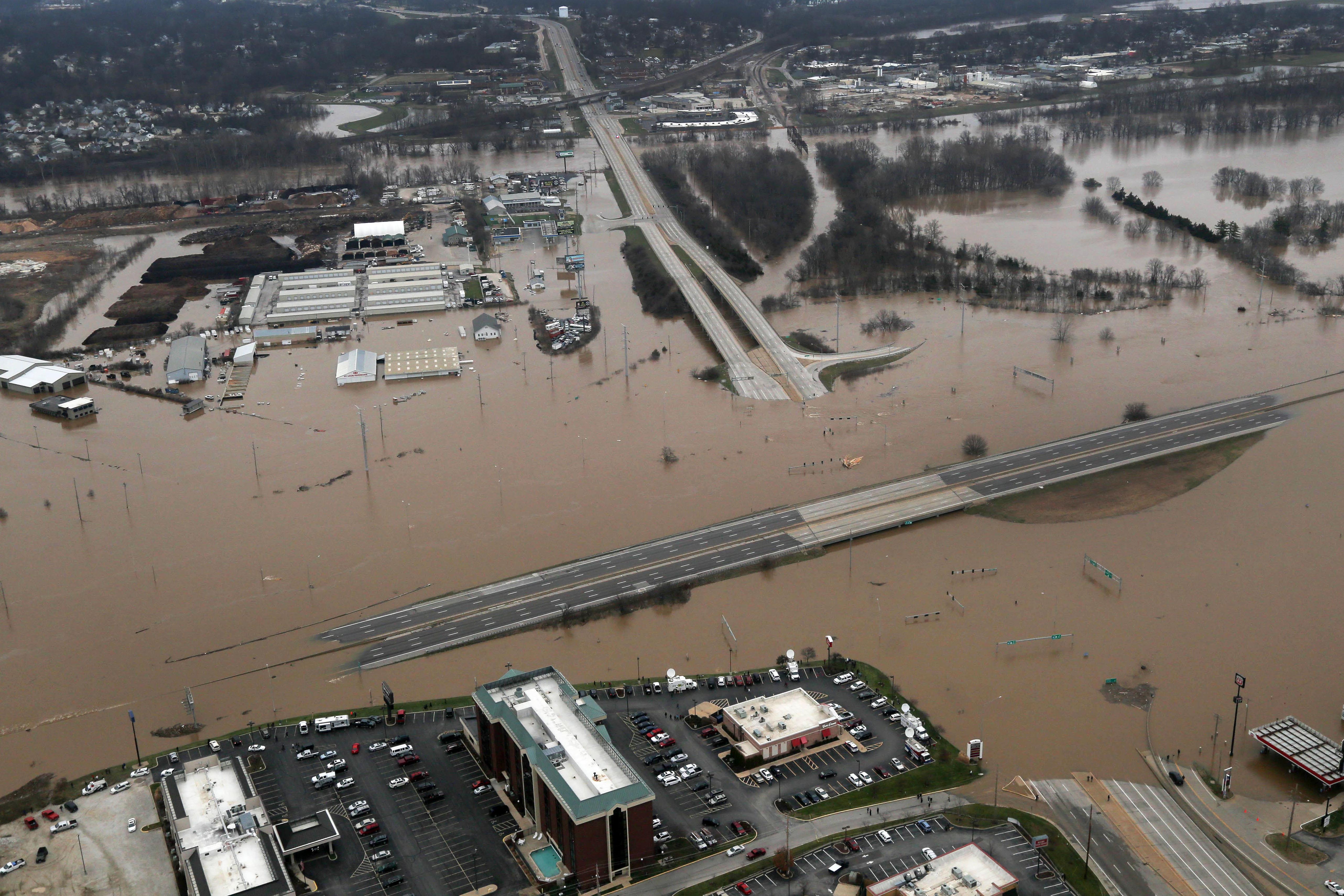By Steve Marshall National Guard Bureau
ARLINGTON, Va., December 31, 2015 — At least 625 National
Guard soldiers and airmen are on duty today as several southern and central
states fight heavy floods triggered by rain and runoff.
In response to historic flooding in some areas of Missouri,
Gov. Jay Nixon mobilized the Missouri National Guard to protect local
communities and support emergency response personnel.
The human toll so far: At least 20 people dead over several
days in Missouri and Illinois, the Associated Press reported.
States of Emergency
States of emergency have been declared in these states:
Georgia, Texas, New Mexico, Missouri, Arkansas, Oklahoma, Illinois, Louisiana
and Missouri, according to data from the National Guard Bureau.
By far, Missouri had the most guard personnel on duty, with
about 515 according to NGB figures. The guard there mobilized a task force with
several hundred soldiers and airmen in several different locations across the
state to provide defense support of civil authorities by saving lives,
protecting property, and maintaining public order, said Army Maj. Gen. Steve
Danner, adjutant general of the Missouri National Guard.
About 50 troops are on duty in New Mexico and 54 in Oklahoma
for weather-related assistance. The Iowa National Guard has agreed to provide
support to Missouri personnel, but hasn't deployed anyone yet.
"The citizen-soldiers and airmen of the Missouri
National Guard are once again ready to support fellow Missourians in
need," Danner said. "We will provide the same high-quality emergency
response they've come to expect."
Missouri National Guard liaison officers are at emergency
operations centers in Perry, St. Charles, Cape Girardeau, Jefferson, St. Louis
and Franklin counties, where in the coming days the Mississippi River is
expected to exceed the record levels set in the Great Flood of 1993, which
caused $15 billion in damages and flooded 30,000 square miles.
Supporting Local Authorities
While on duty, Missouri Guard members are expected to take
on a number of missions in support of local authorities, to include directing
traffic away from road closures, providing security around breached levees and
evacuated areas, sandbagging, and levee monitoring, Danner said.
"We have a team of seasoned leaders who are well-versed
in responding to state emergencies," Danner said. "[The] Missouri
National Guard has supported 14 state emergencies since 2009, including major
flooding in 2011."
The evacuation of the town of West Alton has already taken
place as a result of flooding. Hundreds of roads have been closed across
Missouri, including in St. Louis and all lanes of I-44 at Jerome near Rolla. In
addition, 124 areas on rivers in Missouri are at or above flood stage.
Local officials in Perryville have been working with the
U.S. Army Corps of Engineers to fortify the Bois Brule levee on the Mississippi
River to protect area homes and businesses, including Sabreliner Corporation
and Gilster-Mary Lee.
The troops are part of a task force organized under the 35th
Engineer Brigade at Fort Leonard Wood in Missouri, with Army Lt. Col. Paul
Kirchhoff as the task force commander. Other units supporting the flood
response include 70th Troop Command and 157th Air Operations, Jefferson
Barracks in St. Louis County; 205th Military Police Battalion, Poplar Bluff;
1140th Engineer Battalion, Cape Girardeau; and the Joint Operations Center at
Joint Force Headquarters in Jefferson City.








